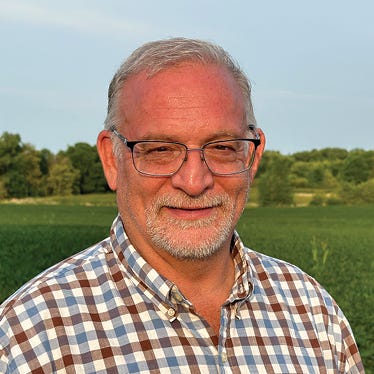August 28, 2019

The Minnesota Pollution Control Agency recently completed a comment period on several water quality reports relating to the Minnesota River. These reports outline the MPCAs goals for the river and the agency’s plans to achieve those goals.
MPCA’s goals include reductions in peak and annual river flow, along with reductions in nitrogen, phosphorus, sediment and bacteria. To achieve those goals, MPCA leans heavily on farmers.
According to Wayne Cords, MPCA regional watershed manager, “farming practices that help protect and improve water quality will make the difference.”
MPCA’s plan to clean up the Minnesota calls for decreased fertilizer use, cover crops, decreased tillage, cropland surface runoff treatment, cropland tile drainage treatment and improved manure application. Some of these activities are self-explanatory, others not as much. You might agree with some or all of them, or not.
Five changes needed
I also have a list of voluntary changes that I believe would make a big difference in protecting the Minnesota River as well as resources across the state:
1. Focus on nutrient use efficiency. Stop calling for decreased fertilizer use and join farmers in the pursuit of increase efficiency of nutrient use. The goal should clearly state that it isn’t about jeopardizing productivity, it is about reducing the risk of nutrients being lost and impacting water. Perhaps a discussion with the MPCA team working on the agency’s Nutrient Reduction Strategy would be helpful here. It focuses on losses, not just using less.
2. Understand runoff dynamics. Acknowledge that across most of the landscape, runoff is not linearly correlated to precipitation. The relationship is exponential. We know that where water can infiltrate, rainfall on dry soils results in little if any runoff. As soils become saturated, runoff increases. A lot, as we saw this past spring. It took the MPCA about a decade to acknowledge what farmers were saying all along — we’re getting more rain and in bigger storms. Let’s hope MPCA’s understanding of runoff dynamics changes faster.
3. Develop a better understanding of how drainage works. The agency’s focus on and bias against tile is preventing advances in water management. Throughout most of the Minnesota River Basin, much of the drainage infrastructure is aging and in need of maintenance. Farmland owners can play a role in reducing peak flows and downstream flooding and are often willing to do so provided the project can be a win for them also.
The Minnesota Board of Soil Water Resources has funding available for such projects through their Multipurpose Drainage Management program. Increased temporary water storage engineered into the system, along with better in-field tile design can deliver water quality benefits, reduce downstream flooding and improve crop production and nutrient use efficiency. Drainage is done for many reasons. Focusing only on negatives while ignoring the benefits kills the conversation.
4. Lead with the real drivers of runoff differences across the state. MPCA always — okay, almost always — leads with land use. Land use is one factor, yet geology, slope and soil type matter even more. I realize that agency staff cannot influence these other factors, so it is perhaps natural to go straight to land use. In my opinion, a discussion on the other factors first would lead to a more productive discussion on land use practices.
5. Align talking points with the goals, not activist rhetoric. I can more easily talk about challenges farmers are dealing with in attempting to reduce water impacts in a culture that acknowledges that others, especially cities, still have progress to make as well.
As the MPCA’s Cords has stated, “Most of the changes needed to improve and protect water resources are voluntary.”
I would echo that view. The changes I’ve outlined here are voluntary, too.
Formo is executive director of the Minnesota Agricultural Water Resource Center.
About the Author(s)
You May Also Like






